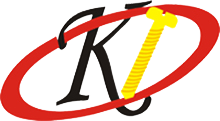Basics of Screws
Screws are essential fasteners used in various applications to join objects together. They consist of a helical thread around a shaft and a head that can be fitted with a tool, such as a screwdriver. In this section, you’ll learn about the fundamentals of screws, different types of screws available, and their unique applications.
First, it is important to understand that screws come in various shapes, sizes, and materials to suit specific needs. For example, some screws are made from brass, which offers strength, conductivity, and corrosion resistance, while others may be constructed from plastic for light loads and enhanced corrosion resistance.
The type of screw you choose depends on the materials you are working with and the desired function. For instance, wood screws are specifically designed to handle the characteristics of wooden materials, whereas drywall screws are used for fastening drywall to wood or metal studs.
To select the most appropriate screw for your project, consider the following factors:
- Material compatibility: Ensure that the screw material is compatible with the materials you are joining.
- Load capacity: Choose a screw with the appropriate strength to handle the weight that it will be bearing.
- Drive type: The head of the screw determines the tool needed to drive it. Common drive types include Phillips, slotted, square, and star-shaped. It’s crucial to select the right drive type to prevent stripping or damaging the screw during installation.
- Thread type: The thread of a screw can be either coarse or fine, which will affect the strength and ease of installation. Coarse threads provide better holding power in softer materials, while fine threads are ideal for harder materials.
By familiarizing yourself with the various types of screws and their specific applications, you can ensure the success of your projects. Remember to always select the most suitable screw based on the materials, required performance, and ease of installation.
Materials and Types of Screws
Metal Screws
Metal screws are used for joining metal parts together. The most common types are made from steel or stainless steel. Steel screws are strong and durable, while stainless steel screws offer corrosion resistance for a longer-lasting hold.
Wood Screws
As the name suggests, wood screws are designed specifically for applications involving wood. They have a sharp, pointed tip and tapered shanks for easy insertion and a tight grip on the material.
Concrete Screws
Concrete screws are utilized to fasten materials to concrete, brick, or masonry substrates. They are made from high-strength steel, allowing them to withstand the pressure and weight of the attached material.
Sheet Metal Screws
In projects involving sheet metal, sheet metal screws come in handy. They are designed with wide, helical threads that help them to securely grip the metal as they are drilled in.
Self-Tapping Screws
Self-tapping screws save you time by eliminating the need for a pre-drilled hole. These screws can create their own threads as they are driven into the material, allowing for quicker and easier installations.
Drywall Screws
When working with drywall, you will want to use drywall screws. They are designed to have a bugle-shaped head, which allows them to sit flush with the drywall surface, preventing damage to the paper facing.
Machinery Screws
Machine screws are used in machinery, appliances, and other metal applications. They come in a variety of shapes and sizes, depending on the specific requirements of the machine or appliance in question. As with metal screws, steel and stainless steel are common materials used.
Plastic Screws
Plastic screws offer a lightweight, corrosion-resistant option for specific applications, such as those involving plastic or other lightweight materials. While not as strong as metal screws, they are a practical choice in situations where reduced weight or the avoidance of metal is necessary.
Parts of a Screw
Screw Head
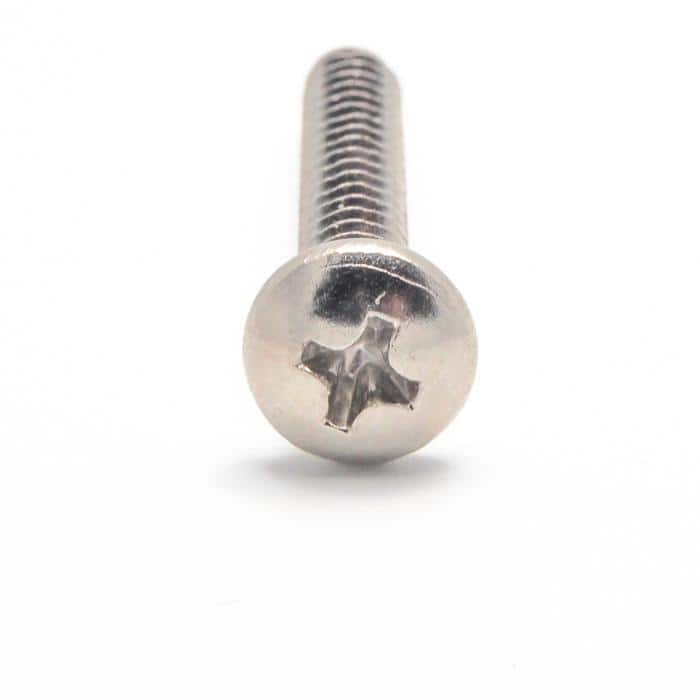
The screw head is the top portion of the screw and is usually wider than the shank. Screw heads come in various shapes and styles, each designed to serve a specific function when securing materials together. For example, domed head screws are ideal for decorative purposes, while flat head screws provide a flush surface when used with countersunk holes.
Shank
The shank is the main body of the screw, divided into two parts – the threaded shank and the non-threaded shank. The threaded shank contains the screw’s helical groove, which enables the screw to be driven into the material. The non-threaded shank, located directly beneath the head, provides a smooth surface for the screwdriver or wrench to grip during installation.
Tip
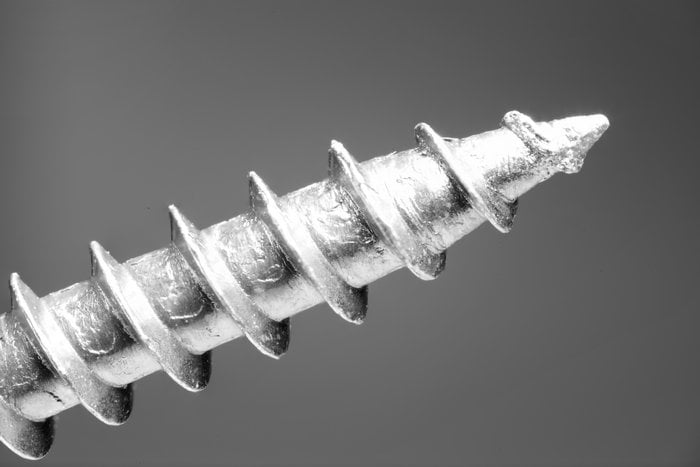
The tip of a screw is located at the bottom of the shank, forming a point or a chamfer. The design of the tip allows the screw to easily penetrate the material it is being driven into, making installation easier and more efficient.
Thread
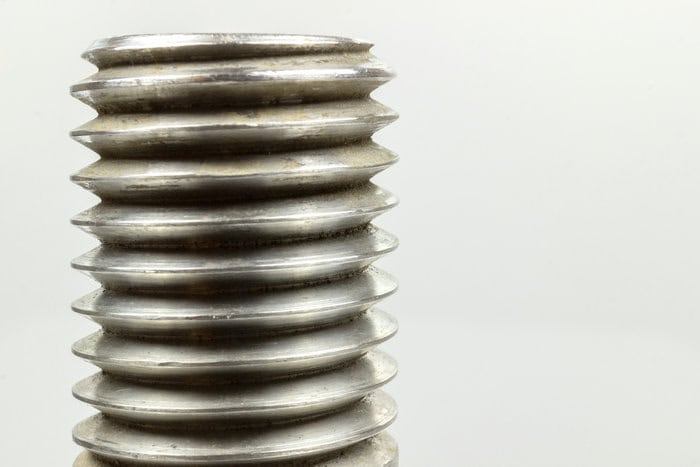
The thread of a screw is the helical groove that runs along the threaded shank of the fastener. Threads may be coarse or fine, depending on the application, materials being fastened, and the level of holding strength required. Coarse threads are better for softer materials like wood, while fine threads are suited for harder materials, such as metal. The pitch, also known as threads per inch, is the distance between the crests of adjacent threads, and determines the screw’s rate of advance per turn.
Drive
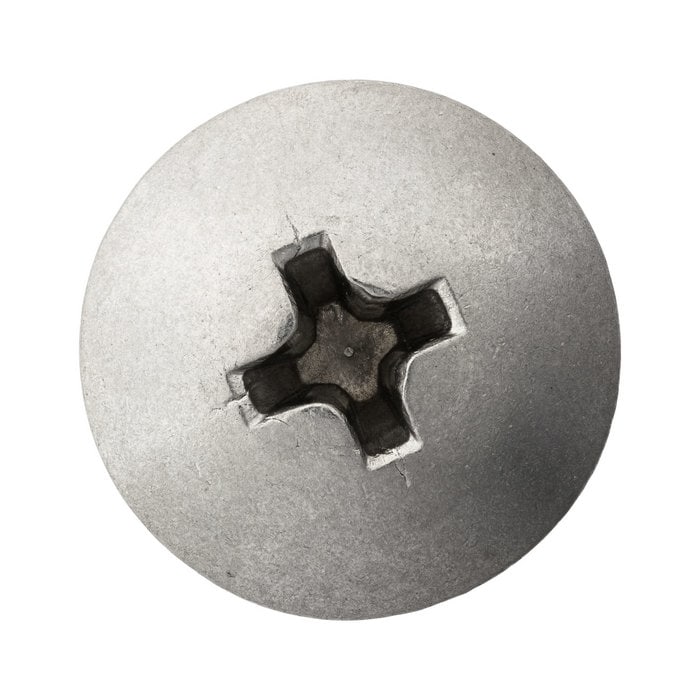
The drive refers to the slot or recess located at the top of the screw head, which is designed to accommodate various drive types, such as flat head, Phillips, and Torx. The drive provides a means for the screwdriver or wrench to engage and turn the screw, ensuring a secure and stable fastening. Different drive types offer varying degrees of resistance to slipping and stripping, which can affect the overall performance of the fastener. By understanding the various parts of a screw, you can select the appropriate fastener for your specific project and achieve the best results.
Types of Drives
Slotted
A slotted drive, also known as a flat head, features a single slot on top of the screw. You can use a slotted screwdriver for hand-driven applications, as it easily accommodates the flat head drive. However, be cautious when using slotted drives in high-torque applications, as the tool may slip out of the slot, potentially causing injury or damage to your workpiece.
Hex
Hex drive screws have a hexagonal socket in their head, requiring the use of a hex (Allen) key or wrench for installation and removal. This type of screw is popular for assembling furniture and precision equipment, as the hexagonal shape allows for a more secure connection between the tool and the screw. To choose the right hex wrench for your hex-head screw, ensure the size of the wrench matches the size of the screw’s socket.
Square
Square drive screws, also known as Robertson drives, feature a square-shaped socket in the screw head. This design reduces the risk of the tool slipping out of the socket while providing increased contact between the screw and the tool. When working with a square drive screw, it is essential to select the correct size of square screwdriver, as using the wrong size may lead to damaged screw heads.
Torx
Torx drive screws have a unique star-shaped pattern, providing superior torque transmission compared to other screw types. To install or remove Torx screws, use a Torx screwdriver or bit that matches the size of the screw’s pattern. Commonly found in automotive and electronic applications, Torx screws offer increased security and resistance to tampering or stripping.
Screwdrivers
Screwdrivers come in various forms to accommodate different drive types, such as slotted, hex, square, and Torx drives. When selecting a screwdriver for your project, ensure the drive style and size match the screw heads to avoid damaging your workpiece. Keep a variety of screwdrivers in your toolbox to tackle a wide range of projects and tasks that require different types of drives.
Additional Types of Screws
Lag Screw
Lag screws, also known as lag bolts, are heavy-duty fasteners used to secure large items or structures. They often require a pre-drilled hole and can be used in conjunction with nuts for extra stability. Their strong construction makes them ideal for connecting lumber, decking, and other thick materials.
Deck Screw
Deck screws are specifically designed for use in decking applications. They feature a coarse thread that provides a strong, secure connection between wooden boards. These screws are usually made of corrosion-resistant material, such as stainless steel, to withstand outdoor conditions. Visit your local hardware store to find the right size and type of deck screws for your project.
Masonry Screw
Masonry screws are designed for use in brick, concrete, or stone surfaces. These fasteners have a unique thread pattern and usually require a pre-drilled hole to ensure proper anchoring. When installing masonry screws, it’s crucial to follow the manufacturer’s guidelines for optimal safety and performance.
Double-Ended Screw
A double-ended screw has two pointed ends and no head. Its primary purpose is to create hidden joints between two pieces of wood or material. These specialties screws require a countersink on both sides of the joint to be adequately concealed.
Dowel Screw
Dowel screws are similar to double-ended screws but differ in their thread design. They have coarse wood threads on both ends and are used for joining wooden pieces without the use of visible hardware. Make sure to align the threads correctly when connecting the pieces to achieve a strong and stable joint.
Hammer Drive Screw
Hammer drive screws are unique fasteners that require a hammer to be driven into place. These screws typically have a flat head and can be used for attaching metal parts or fixtures to various surfaces, such as wood or concrete. They provide a quick and secure connection without the need for additional tools like a screwdriver or drill.
Mirror Screw
Mirror screws are designed specifically for mounting mirrors and similar fragile items. They feature a decorative cap that conceals the screw head, providing a clean and polished appearance. For added protection, ensure the mirror is adequately supported and use a soft material, such as rubber, between the screw head and the mirror’s surface to prevent damage during installation.
Standards and Guidelines
DIN Standards
In relation to screws, the German-based DIN Standards offer specifications for various types of fasteners, including concrete screws, wall studs, and hidden joint fasteners. When working with these products, adhering to DIN Standards ensures a high level of quality, safety, and performance. These standards encompass a wide range of applications, from construction and furniture assembly to soft material fastening and metal stud installation.
ASME Standards
The American Society of Mechanical Engineers (ASME) provides guidelines on their ASME B18.2.1 Standard, which covers specific requirements for bolts, screws, and studs. This encompassing document addresses both imperial and metric fasteners, catering to diverse industries such as construction and furniture making. By following ASME Standards, you can ensure that your fasteners comply with industry-accepted practices, allowing for reliable and efficient assembly.
ISO Standards
The International Organization for Standardization (ISO) offers screw specifications that apply to a wide variety of applications, including construction, metal studs, and soft material fastening. These globally recognized standards enable you to select the appropriate fasteners for your project, ensuring compatibility and performance. ISO Standards are particularly beneficial for international manufacturers and suppliers, as they promote consistency and interoperability of fasteners across different countries and industries.
By adhering to these established standards and guidelines, you can ensure that your fasteners meet the required specifications for your application, ensuring high-quality performance and ease of installation.
Frequently Asked Questions
What are the common uses for different screw types?
Different screw types are designed for specific applications. For instance, wood screws are commonly used for connecting wood to wood, while drywall screws are ideal for attaching drywall to wood studs. Machine screws are often used in machinery and electronics, and self-tapping screws can create a threaded hole in metal or plastic. It is essential to use the appropriate screw type to ensure a secure and reliable connection.
How do wood screws differ from metal screws?
Wood screws and metal screws differ primarily in their threading and materials. Wood screws have a tapered, coarser thread designed to grip wood fibers, whereas metal screws have a finer, more uniform thread optimized for threading into metal parts. Additionally, wood screws are often made of brass or stainless steel, while metal screws can be made from a broader range of materials, including steel, aluminum, and brass.
Which screw types are suitable for wood applications?
Wood screws are the most suitable choice for wood applications, as they are designed specifically for connecting wood to wood. Deck screws, particleboard screws, and drywall screws can also be used with wood, depending on the specific project requirements. It is crucial to match the screw type with the demands of the application to ensure a secure and stable connection.
What are the various screw sizes available?
Screw sizes can range from small sizes like #0 (1/16 inch) to larger sizes like #14 (1/4 inch) for the screw diameter, and lengths from 1/8 inch to over 4 inches. The actual size requirements depend on the specific applications and materials being used. It is vital to choose the appropriate screw size to ensure adequate holding power and prevent material damage.
Can you provide a screw types chart?
While I cannot provide a visual chart, I suggest visiting websites that outline different screw types, like REthority or The Family Handyman, for detailed descriptions and images to help compare and identify various screws. These websites can help you familiarize yourself with different screw types, head designs, and uses.
How do screw head types differ in appearance and function?
Screw head types can vary based on appearance and function. For example, flathead screws have a countersunk design that allows them to sit flush with the surface, while pan head screws have a rounded top and are used when appearance is less critical. Philips and slotted screw heads require different types of screwdrivers, and other head designs, such as Torx or hex, provide additional security or torque. Choosing the right screw head depends on the specific application and requirements of the project.
